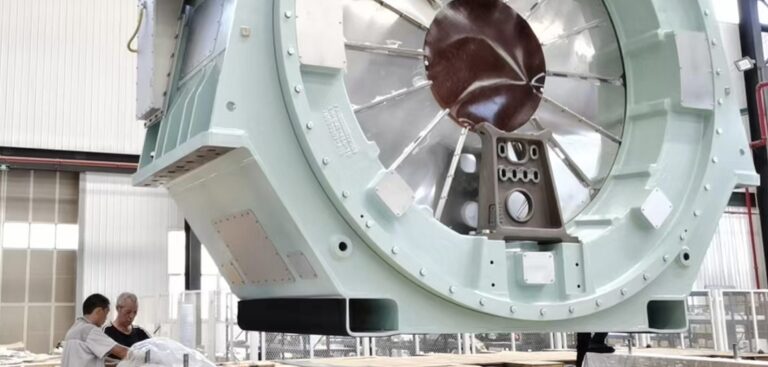A global sourcing agreement signed between marine electric drivetrain company Yaskawa Environmental Energy / The Switch and ABB Marine & Ports in Shanghai will see the former delivering PMM2000M permanent magnet machines for use as shaft generators in large containership vessels.
For the first order, Yaskawa Environmental Energy / The Switch will deliver 16 machines capable of a more than 4MW output to ABB Marine & Ports for installation as permanent magnet shaft generators (PMSGs) on board dry cargo container vessels.
The company’s in-line and direct-drive PMM2000M has been developed for large container vessels powered by 2-stroke engines, where shaft generator power output is normally 4-5MW. Measuring five meters in diameter, the PMSG is low in weight while continuing to provide a high level of efficiency and power density for good performance. The PMM2000M has an estimated operational speed of 50–80rpm.
“The contract also takes us deeper into the Asian market, where there is a lot of growth potential given the spate of new orders in China, Korea and Japan made on the back of hot container freight rates,” said Risto Ahvo, head of key account management, Yaskawa Environmental Energy / The Switch. “It’s also great for business efficiency, as we won’t have to spend lots of time on individual proposals.
“Ships won’t require any other source of electrical energy during long ocean voyages,” he added. “This reduces genset wear and tear as gensets can stay off. Its mechanical simplicity also increases reliability and lowers maintenance requirements. A further characteristic is low vibration levels.”
The stators will be manufactured in China and the other components in Europe, with final assembly work being conducted at The Switch’s Large Drive Test Center (LDTC) in Lappeenranta, Finland. The technology will then be installed on board vessels to comply with the upcoming 2023 Energy Efficiency Existing Ship Index and Carbon Intensity Indicator regulation parameters.
“We will then test the machines using ABB frequency converters to verify electrical and thermal performance of all drive elements,” said Ahvo. “This is typical at the LDTC where we can test solutions using either our own or customers’ drives and components. Testing involves string tests and back-to-back testing at full load. We will then ship the machines to China and will also send engineers to supervise installation.”
Ahvo continued, “The PMM2000M has huge potential as electric propulsion gradually replaces conventional diesel-mechanical propulsion. With a PMM2000M propulsion motor, it’s possible to reach power up to 12MW per propulsion line. With two machines on two propulsion lines, power can reach almost 50MW, which is sufficient even for the largest ships.”



